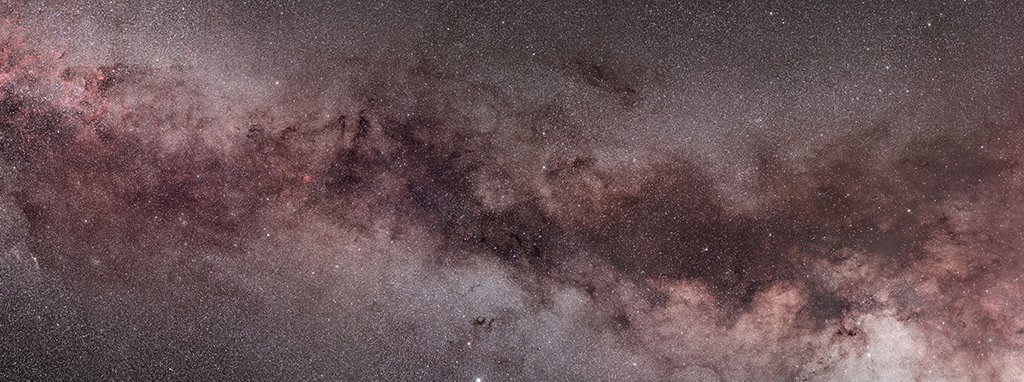Welcome to the SDSS tutorial section. This section contains a series of hands-on tutorials to learn how to work with different aspects of the SDSS data. If you are unsure what kind of SDSS data or which SDSS survey is best for your science, then go the the mapper overview page: this page contains short descriptions with links for more details on all SDSS surveys (on-going and completed).
ON THIS PAGE
Running tutorials on SciServer
Education focused tutorials
MWM Centered Tutorials
BHM Centered Tutorials
LVM Tutorial
Survey Wide Tutorials
SQL
Tutorials for previous data releases
New in DR19
For the first release of SDSS V spectra, a number of tutorials highlighting a variety of data products are now available. All SDSS tutorials are available on the SDSS GitHub page and are now available for interactive use on SciServer Compute.
Running Tutorials on SciServer
A specific image is available for working with SDSS data. In order to access both SDSS data and the suite of software tools you will need, create an account then when you create a new container follow these steps:
- Choose the
SDSSCompute image. This image contains thesdss_accesspython package, as well asastropy,astroquery,specutilsand other useful libraries. - Include the
SDSS SASdata volume. It will be mounted in the Jupyter session under/home/idies/workspace/sdss_sas/. - Once in a notebook, make sure the
py39python kernel is selected.
Education Focused Tutorials
SDSS strives to make accessible resources for educators. For the release of SDSS DR19, two tutorials have been created. A MWM focused tutorial guides students through the Galaxy using stars observed with APOGEE, while a BHM focused tutorial introduces students to spectra of super-massive blackholes. Both tutorials included suggested exercises, and links to solutions are provided.
MWM Centered Tutorials
The MWM survey is focused on stars in the Milky Way. For many science cases, the most useful SDSS outputs are summary files containing stellar parameters for each star in the data release.
There is an MDwarf tutorial using the astraAllStarMDwarfType summary file to plot an HR diagram of M dwarfs observed in DR19 and using the astraAllVisitBossNet summary file to compare results between the two pipelines.
There is a tutorial showing the Galactic chemical trends using the astraAllStarASPCAP summary file. Relationships between [Fe/H] and Galactic position, as well as [Fe/H] vs [Mg/Fe] and Galactic position, are shown.
Since MWM provides many different pipeline products, a composite summary file, MWM lite, is provided where the best pipeline for each star is used. A tutorial demonstrating some of these choices is available.
A final tutorial uses the astraAllStarASPCAP summary file to plot an HR diagram of all DR19 APOGEE stars using photometry and astrometry from Gaia DR3.
For anyone who wants to use SDSS spectra directly, there is a notebook that retrieves and plots an APOGEE spectrum and another that showcases a BOSS white dwarf spectrum. Both notebooks show how to use sdss-access to retrieve spectra.
BHM Centered Tutorials
The BOSS pipeline coadds spectra, assuming they are taken within some reasonable time frame, and outputs useful parameters such as an estimated redshift for each object.
A tutorial exploring spectra coadds clearly shows how coadding two spectra decreases the noise, and plots the included model spectrum.
Another tutorial provides an alternative model of a BOSS spectrum.
Tutorials highlighting value added catalogs will be added to the VAC tutorials GitHub repo as they become available. At the time of writing, tutorials for one BHM VAC are available.
LVM Tutorial
A single LVM tile of the Helix Nebula is included in DR19, as a preview of the data format and quality. A tutorial showing how to access, read in, and work with the data is available.
Survey Wide Tutorials
MWM and BHM have worked closely together to obtain, process, and release the DR19 spectra. Many important survey components are therefore shared between mappers.
New to SDSS-V DR19:
- The concept of a unique sdss_id has been introduced. A tutorial showing how to cross-match using this ID is available.
- Previous iterations of SDSS often used bit-masks to encode targeting information. SDSS V provides a new tool call semaphore to help users navigate targeting information; a semaphore tutorial is provided.
- In order to target brighter targets, significant effort was made to carefully offset targets in order to reduce the flux entering a given fiber. A tutorial highlighting the success of this program has been created.
- A new comprehensive all spectra summary file has been introduced with the Allspec data product. A tutorial providing an example of how to use the allspec table, such as matching columns to data reduction pipeline summary files, has been created.
SQL
More information on querying SDSS data via a SQL database can be found on the SQL Examples page. There are also several examples of SQL searches available on the SkyServer SQL Search page or SkyServer Sample Queries page
Tutorials for previous data releases
If you want to work with data that was released in SDSS I-IV, then check the Completed Surveys page for direct links to data descriptions, caveats, and relevant tutorials. Completed surveys include:
- Imaging legacy survey (SDSS-I/II)
- Supernova Survey (SDSS-II)
- SEGUE (SDSS-II) and SEGUE-2 (SDSS-III)
- MARVELS (SDSS-III)
- BOSS (SDSS-III) and eBOSS (SDSS-IV)
- APOGEE (SDSS-III) and APOGEE-2 (SDSS-IV)
- MaNGA (SDSS-IV)
- MaStar (SDSS-IV
We have tutorials available on parameter files, fits files, and using bitmasks, and a page with conversions between our wavelength and magnitude systems and other systems. You can find an overview page of prior tutorials here. This page lists tutorials especially relevant to previous SDSS data releases such as using bitmasks, or working with .par files, or wavelength and magnitude conversions.

